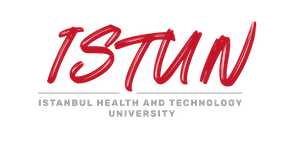| Course Objectives: |
This course aims to introduce the basic principles and concepts of statics so that students can determine the internal force distributions and internal stress controls in structural elements and static systems, and in the strength of materials section, to teach the dimensioning of carrier systems and the calculation of the maximum forces that can be carried safely. |
| Course Content: |
Introduction - Basic Concepts and Principlesin Statics, Equilibrium of Particle, Force Systems, Distributed Loads, Equilibrium of Rigid Bodies, Center of Gravity, Center of Mass, Truss Systems, Moment of Inertia, Strength: Introduction, Stress, Stress and Strain, Hook's Law, Axial Loading, Stress and Strain Transformations, Pure Bending |
| Week |
Subject |
Related Preparation |
| 1) |
Statics: Introduction - Basic Concepts and Principles, Unit Systems, Newton's Laws of Motion, International Unit Systems, Scalar and Vector Quantities, Sample Question Solutions |
|
| 2) |
Equilibrium of a Particle, Free Body Diagram, Three-Dimensional Force Systems, Moment of a Force Relative to an Axis, Sample Question Solutions |
|
| 3) |
Resultant of force systems, Double Moment, Equivalent Double Moment, Simplification of Force and Couple Systems, Sample Question Solutions |
|
| 4) |
Simultaneous Coplanar and Parallel Force Systems, Loads Distributed Along a Single Axis, Equilibrium of Rigid Bodies, Sample Question Solutions |
|
| 5) |
Center of Gravity, Center of Mass and Geometric Center, Pappus and Guldinus Theorems, Composite Bodies, Sample Question Solutions |
|
| 6) |
Structural Analysis, Truss Systems, Simple Truss, Joints Method, Section Method |
|
| 7) |
Space Truss, Node Method, Cutting Method Sample Question Solutions |
|
| 8) |
Midterm Exam |
|
| 9) |
Moment of Inertia, Parallel Axis Theorem for an Area, Moments of Inertia for Composite Areas, Sample Question Solutions |
|
| 10) |
Moments of Inertia for an Area about Inclined Axes, Mohr's Circle of Moment of Inertia, Shell Element, Disc Element, Sample Question Solutions |
|
| 11) |
Strength of Materials: Introduction, Stress, Stresses in the Elements of a Structure, Shear Stress, Bearing Stress in Connections, Stress in an Inclined Plane under Axial Load, Stress under General Loading Conditions; Stress Components, Sample Question Solutions |
|
| 12) |
Stress and Strain, Normal Stress under Axial Loading, True Stress and True Strain, Hook's Law; Modulus of Elasticity, Repeated Loading; Fatigue, Deformations of Elements Under Axial Load, Problems Related to Temperature Changes Sample Question Solutions |
|
| 13) |
Poisson's Ratio, Generalized Hooke's Law, Dilatation Module, Shear (Shear) Stress, Sample Question Solutions |
|
| 14) |
Stress and Strain Transformations, Principal Stresses; Maximum Shear Stress, Mohr Circle for Plane Stress, Sample Question Solutions |
|
| 15) |
Pure Bending, Stresses and Deformations in the Elastic Region, Sample Question Solutions |
|
| Course Notes / Textbooks: |
yok |
| References: |
Mühendislik mekaniği statik / R. C.. HIBBELER; S.C. FAN ; ÇEVIRENLER : AYŞE SOYUÇOK, ÖZGÜN SOYUÇOK, LITERATÜR YAYINCILIK, 2020
Cisimlerin Mukavemeti: F. P. BEER, E.R. JOHNSTON, J.T. DEWOLF, D.F. MAZUREK (Çevirenler A. SOYUÇOK, Ö. SOYUÇOK), Literatür Yayınları, 2016
Mühendislik Mekaniği: Statik, J.L. MERIAM, L.G. KRAIGE (Çeviri: Prof.Dr. M.K. APALAK), Nobel Akademik Yayıncılık, 2013
Mühendisler İçin Mekanik-Statik: F. P. BEER, E.R. JOHNSTON, E.R. EISENBERG (Çevirenler Ö. GÜNDOĞDU, H.R. ÖZ, O. KOPMAZ), İzmir Güven Yayınevi, 2008.
Mühendislik mekaniği : Statik / R. C. Hibbeler
|
| |
Program Outcomes |
Level of Contribution |
| 1) |
Having advanced theoretical and practical knowledge by adapting to developing technology. |
3 |
| 2) |
Ability to use the advanced theoretical and practical knowledge acquired. |
3 |
| 3) |
Ability to interpret and evaluate data, identify and analyze problems, and develop solution suggestions based on research and evidence, using the advanced knowledge and skills acquired in the field. |
3 |
| 4) |
Ability to independently carry out an advanced study related to the field. |
3 |
| 5) |
Ability to take responsibility individually and as a team member to solve unforeseen complex problems encountered in field-related applications. |
3 |
| 6) |
Ability to plan and manage activities for the development of the employees under his/her responsibility within the framework of a project. |
3 |
| 7) |
Ability to critically evaluate the advanced knowledge and skills acquired in the field, |
3 |
| 8) |
Ability to determine learning needs and direct learning. |
3 |
| 9) |
Being able to develop a positive attitude towards lifelong learning. |
3 |
| 10) |
To be able to inform relevant people and institutions on issues related to the field; Ability to convey thoughts and solution suggestions to problems in written and oral form. |
3 |
| 11) |
Ability to share one's thoughts on issues related to one's field and solutions to problems, supported by quantitative and qualitative data, with experts and non-experts. |
2 |
| 12) |
Ability to organize and implement projects and events for the social environment in which one lives with awareness of social responsibility. |
2 |
| 13) |
Ability to follow the knowledge in the field and communicate with colleagues by using a foreign language at least at the European Language Portfolio B1 General Level. |
2 |
| 14) |
Ability to use information and communication technologies along with computer software at least at the Advanced Level of the European Computer Usage License required by the field. |
3 |
| 15) |
Acting in accordance with social, scientific, cultural and ethical values in the stages of collecting, interpreting, applying and announcing the results of data related to the field. |
2 |
| 16) |
Having sufficient awareness about the universality of social rights, social justice, quality culture and protection of cultural values, environmental protection, occupational health and safety. |
2 |
 Istanbul Health and Technology University INFORMATION PACKAGE / COURSE CATALOGUE
Istanbul Health and Technology University INFORMATION PACKAGE / COURSE CATALOGUE